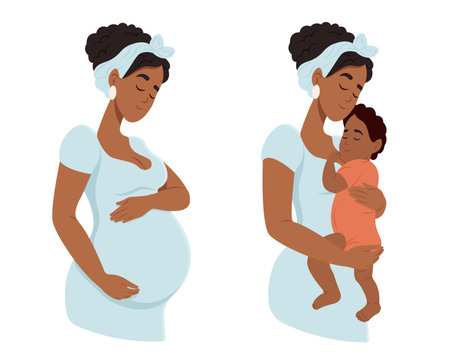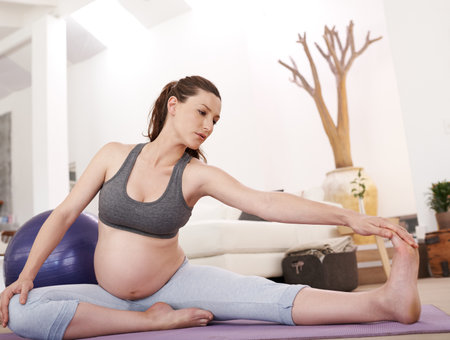Understanding Exercise Benefits in the Third Trimester
As you enter the third trimester of pregnancy, staying active might feel more challenging, but it’s also more important than ever. Regular, safe exercise can provide a host of benefits for both expectant moms and their babies. Physical activity in these final weeks can help manage common discomforts like back pain and swelling, improve sleep quality, and support better posture as your body changes. Beyond physical advantages, staying active can also boost your mood, reduce stress, and help maintain healthy energy levels during this demanding stage. For your baby, studies suggest that maternal fitness may contribute to healthy birth weight and even positive brain development. Understanding these benefits helps motivate moms-to-be to make movement a priority—always with safety and comfort top of mind.
2. Safety Tips: Exercising Smart for You and Baby
Staying active during your third trimester can be incredibly beneficial, but safety comes first—for both you and your baby. Here are essential guidelines to help you exercise with confidence and care.
Listen to Your Body
Your body is changing rapidly in the third trimester. Pay close attention to how you feel during every workout session. If you experience pain, dizziness, shortness of breath, or any unusual symptoms, stop immediately and consult your healthcare provider. Trusting your instincts is key: if something doesn’t feel right, it’s okay to modify or skip your routine.
Stay Hydrated
Proper hydration is crucial during pregnancy, especially while exercising. Dehydration can lead to overheating and even preterm contractions. Aim to drink water before, during, and after physical activity. Here’s a simple guide:
| When | How Much Water |
|---|---|
| Before Exercise | 8-12 oz (about 1-1.5 cups) |
| During Exercise | 4-8 oz every 15-20 minutes |
| After Exercise | 8 oz (about 1 cup) |
Modify or Pause When Needed
Your energy levels and comfort can vary day by day. It’s completely normal—and encouraged—to adjust your workout routine as needed. Here are some common scenarios where modification might be necessary:
- Fatigue or discomfort: Opt for gentler movements or reduce intensity.
- Balance changes: Switch to seated or supported exercises if you feel unsteady.
- Braxton Hicks contractions: Take a break until they pass.
- Pain or swelling: Stop activity and check in with your provider.
When to Pause or Stop Exercising Completely
If you notice any of the following warning signs, stop exercising and contact your OB-GYN right away:
- Vaginal bleeding or fluid leakage
- Dizziness or fainting
- Regular painful contractions
- Chest pain or severe shortness of breath
- Decreased fetal movement
Your Well-being Comes First
The goal is to keep moving safely—not to push yourself beyond your limits. With these safety tips in mind, you’ll be able to enjoy the benefits of exercise throughout your third trimester while protecting both yourself and your growing baby.

3. Top Recommended Exercises for the Third Trimester
Staying active during the third trimester can help support both your physical and emotional well-being as you prepare for delivery. Below are some of the most pregnancy-friendly exercises that are safe, effective, and tailored to meet your unique needs during these final weeks.
Walking: Simple and Effective
Walking is one of the safest and most accessible forms of exercise for expectant moms in the third trimester. It helps maintain cardiovascular health, boosts energy levels, and supports circulation without putting extra stress on your joints. Grab a supportive pair of sneakers and enjoy a stroll around your neighborhood or local park—just remember to listen to your body and stay hydrated.
Swimming and Water Aerobics
Water-based activities like swimming and prenatal water aerobics are excellent options as they provide gentle resistance while reducing pressure on your back, hips, and knees. The buoyancy of the water can also offer soothing relief from swelling and discomfort, making it easier to move freely even as your belly grows.
Prenatal Yoga
Prenatal yoga classes are specifically designed to accommodate your changing body throughout pregnancy. These gentle stretches and poses improve flexibility, relieve tension, enhance relaxation, and teach valuable breathing techniques that can be helpful during labor. Be sure to choose a class led by a certified prenatal instructor who understands the unique needs of pregnant women in their third trimester.
Strength Training with Modifications
Light strength training helps maintain muscle tone and prepare your body for childbirth. Focus on low-impact exercises using resistance bands or light dumbbells, targeting major muscle groups while avoiding positions that require lying flat on your back. Always use proper form and avoid overexertion—your goal is to feel energized, not fatigued.
Consult Your Healthcare Provider
Before starting any new exercise routine in the third trimester, it’s important to get clearance from your OB-GYN or midwife. They can help you personalize your activity plan based on your medical history and current pregnancy status.
Stay Safe While Staying Active
Remember, every pregnancy is unique. Listen to your body, modify exercises as needed, and prioritize safety above all. Staying active with these recommended exercises can help you feel stronger, more comfortable, and better prepared for the exciting journey ahead.
4. Exercises to Avoid in Late Pregnancy
While staying active during your third trimester is important, knowing which exercises to avoid is equally essential for your safety and your baby’s health. As your body changes, certain movements can increase the risk of falls, injury, or complications. Here’s a helpful guide to what you should skip in the final stretch of pregnancy:
| Exercise/Movement | Why to Avoid |
|---|---|
| High-Impact Aerobics (e.g., running, jumping) | Increases risk of falls and puts extra strain on joints and pelvic floor. |
| Contact Sports (e.g., basketball, soccer) | Risk of abdominal trauma and collisions that may harm you or your baby. |
| Lying Flat on Back Exercises | Can restrict blood flow due to pressure on the vena cava, causing dizziness or reduced blood supply to the baby. |
| Heavy Weight Lifting | Adds unnecessary pressure on the core and pelvic area; increases risk of strain or injury. |
| Bikram/Hot Yoga or Overheating Activities | Raising core body temperature may lead to dehydration or overheating, which isn’t safe during pregnancy. |
| Deep Twists or Intense Core Workouts | Puts strain on abdominal muscles and may contribute to diastasis recti (ab separation). |
| Activities with Balance Risks (e.g., cycling outdoors, horseback riding) | Your center of gravity shifts during pregnancy, making these activities more dangerous due to fall risk. |
Listen to Your Body and Consult Your Provider
If you’re ever unsure whether an exercise is safe as your pregnancy progresses, always check with your healthcare provider. Remember: every pregnancy is unique. By steering clear of risky activities and focusing on safe movement, you’re setting yourself up for a healthier, more comfortable third trimester.
5. How to Build a Safe Third Trimester Workout Routine
Staying active during your third trimester can help you feel more energized, sleep better, and prepare your body for labor, but it’s important to design a workout routine that fits into your busy life while keeping safety and comfort at the forefront. Here are some practical tips for building a balanced weekly workout plan:
Prioritize Comfort and Flexibility
Your body is changing rapidly in the third trimester, so listen to what it needs. Choose exercises that feel good—think walking, swimming, prenatal yoga, or gentle strength training with light weights or resistance bands. Invest in supportive sneakers and breathable workout clothes to keep you comfortable.
Set Realistic Goals
You don’t have to work out every day. Aim for three to five sessions a week, each lasting about 20–30 minutes. Remember, even short bursts of movement count! The key is consistency, not intensity.
Mix Up Your Routine
A balanced plan includes a combination of cardio (like brisk walking), strength training (using bodyweight or light dumbbells), and flexibility exercises (such as stretching or yoga). Try alternating activities throughout the week to keep things interesting and avoid overworking any one muscle group.
Schedule Workouts Around Your Energy Levels
The third trimester often comes with fatigue, so pay attention to when you feel most energetic—maybe that’s in the morning or after lunch. Schedule your workouts during these windows, and don’t be afraid to modify based on how you feel each day.
Listen to Your Body and Rest When Needed
If you experience discomfort, dizziness, or shortness of breath, pause and rest. Hydrate often and don’t push through pain. It’s perfectly okay to take extra breaks or scale back your routine as your pregnancy progresses.
Include Rest Days
Rest is just as important as exercise. Allow yourself at least one or two full rest days each week to recover and recharge. This balance will help you maintain your energy and support overall well-being throughout your third trimester.
6. When to Seek Professional Guidance or Medical Advice
Staying active during your third trimester can be incredibly beneficial, but it’s just as important to know when to pause and reach out for expert support. Understanding the warning signs and knowing when to consult your OB/GYN or a certified prenatal fitness professional ensures both your safety and your baby’s well-being.
Warning Signs to Watch For During Exercise
While many women enjoy safe, moderate exercise late in pregnancy, certain symptoms signal the need for immediate attention. If you experience any of the following, stop exercising right away:
- Vaginal bleeding or fluid leakage
- Dizziness, fainting, or feeling lightheaded
- Shortness of breath before starting activity
- Chest pain or palpitations
- Regular painful contractions or cramping
- Decreased fetal movement
- Swelling, pain, or redness in your calf (possible sign of blood clot)
Consult Your OB/GYN
If you notice any warning signs—or if you’re unsure whether a symptom is normal—it’s best to contact your healthcare provider promptly. Your OB/GYN can assess your individual situation and provide recommendations tailored to your pregnancy needs.
When to Reach Out to a Prenatal Fitness Expert
If you’re new to exercise, have specific health concerns, or want guidance on modifying workouts safely, consider working with a certified prenatal fitness specialist. They can design a routine that matches your trimester and personal goals while minimizing risk.
Remember: Every pregnancy is unique. Listen to your body, stay attuned to changes, and don’t hesitate to seek professional advice whenever something feels off. Your health—and your baby’s—always comes first.


